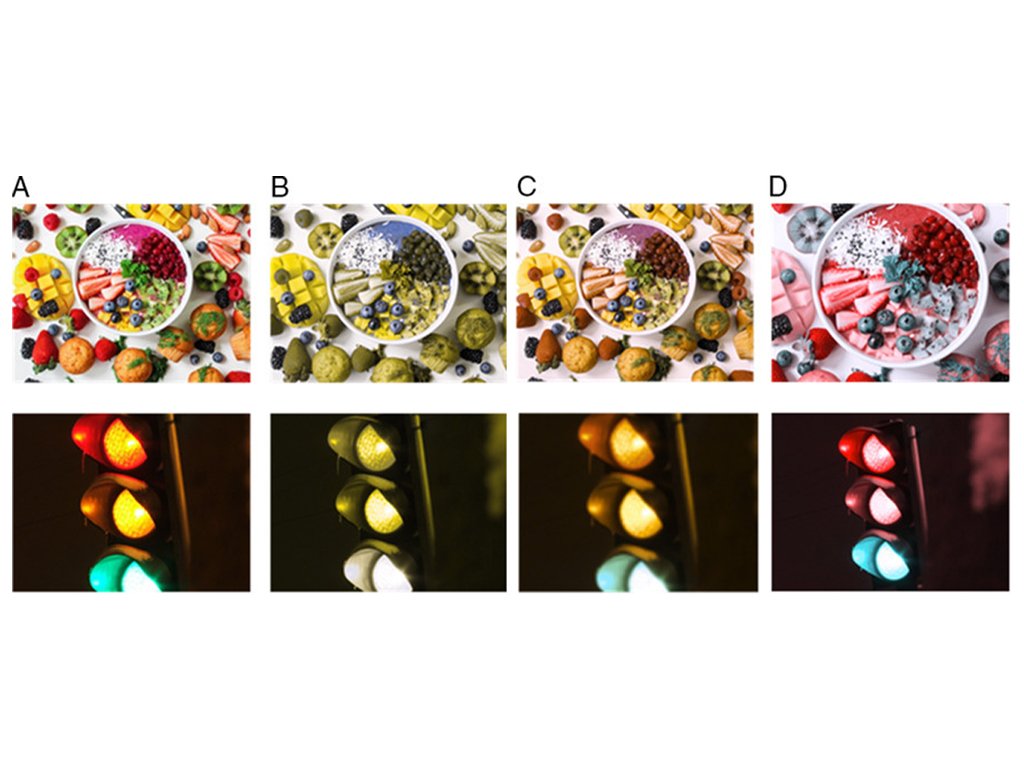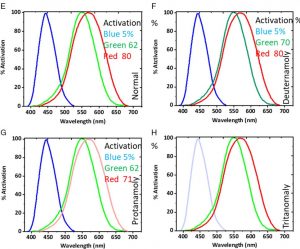
A team of researchers from Khalifa University has developed a new wearable that could help people with color blindness. While using dyes to develop lenses for glasses to help correct colorblindness is not new, the team has developed a method using 3D printing to manufacture customized glasses.
Dr. Haider Butt, Associate Professor of Mechanical Engineering, Dr. Fahad Alam, Postdoctoral Fellow, Dr. Mohamed Elsherif, Postdoctoral Fellow, and Ahmed Salih, all Department of Mechanical Engineering, published their results in Advanced Engineering Materials. This research also inspired a Senior Design Project for undergraduate students Saif Abdulla Alnaqbi, Ali Saif Rashid Alshawi Aleghfeli, Rashid Ali Khalfan Bin Gahfan Al Ali, and Mohammad Ali Mohamad Hussain Ali Alshamali.
A transparent resin was used to make the lenses, mixed with two wavelength-filtering dyes to provide a tinting effect. The researchers used three different concentrations of the dyes to customize the lenses and compared their 3D-printed glasses to commercially available products used to treat color vision deficiency (CVD).
“Patient-specific customization of glasses for CVD remains a challenge, even though research has significantly advanced the properties and materials of CVD wearables available on the market,” Dr. Butt said.
The retina of the eye has three types of cones: One perceives blue light, another green, and the third red. These cones work together to allow people to see the whole spectrum of colors, but CVD is an inherited ocular disorder that limits this ability. Red-green color blindness is the most prevalent form of CVD, with most sufferers relying on wearables to manage the difficulties in day-to-day tasks. The most common wearable is a form of tinted glass.
Deuteranomaly, which occurs mostly in men, is a condition in which the photoreceptor responsible for detecting green light responds to light associated with red. This can be improved using red-tinted glasses, which make the colors more prominent. Certain dyes can absorb and filter out some of the wavelengths between green and red that confuse the photoreceptors. With less color overlap, the brain gets a clearer signal to help distinguish between the problem colors. This concept can also be extended to the other forms of CVD.
The KU team used two dyes: One blocked the undesired wavelengths for red-green patients, while the other filtered unwanted wavelengths for yellow-blue patients. The team used both dyes in their lenses, and when tested, volunteers with red-green CVD and yellow-blue CVD both benefited from the glasses, suggesting their efficacy at managing both CVD types.

Glasses based on this approach are commercially and readily available, but they are bulky and can be uncomfortable. The KU research team developed their own frames for their lenses, using 3D printing to optimize the frames for comfort and usability. Inspired by commercially available designs, their 3D printed glasses can fold like other glasses, making them more usable to the wearer.
Research on CVD-management techniques has shown that using dyes can be difficult as leaching and toxicity problems can occur, however the research team tested this to ensure their glasses were safe for long-term use. The stability of the dyes within the 3D printed glasses was examined by storing the glasses in water over a week. Their results showed that no dye leaked into the water, indicating their stability. They also left the glasses open at ambient conditions for a further week, proving their stability and long-lasting properties.
Their mechanical properties were also carefully assessed. Their flexibility and tensile strength are crucial components in quantifying their longevity and durability, and when tested, the glasses exhibited excellent durability, without breaking even when subjected to folding or bending.
“Our results showed that 3D printing had no influence on the wavelength-filtering properties of the dyes,” Dr. Butt said. “In fact, the dyes remained unchanged as they were integrated with the resin and 3D printed. When we compared the optical performance of our glasses with commercial colorblind glasses, our results indicated that our 3D-printed glasses were more selective in filtering undesired wavelengths than the commercially available options. They have great potential in treating colorblindness, and their ease of fabrication and customization means they can be tailored to each individual patient.”
The research work was funded by Sandooq Al Watan and Aldar Properties.
Jade Sterling
Science Writer
30 June 2022






